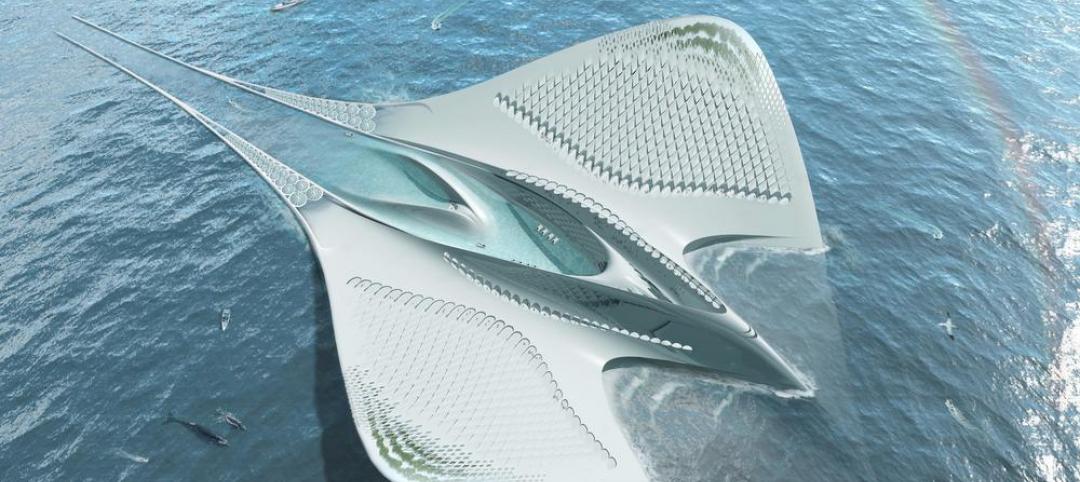Conventional windows have long been considered the weak link in the building envelope. According to the U.S. Department of Energy’s Building Technologies Program Multi-Year Program Plan 2011-2015, approximately 4.4 quadrillion Btu of energy in the U.S. is lost through windows in the form of heating and air-conditioning loads.
The DOE plan suggests that regardless of orientation or climate, window systems have the potential to outperform the best-insulated wall or roof in terms of annual energy performance, peak demand reduction, and cost.
UNIVERSITY FINDS A SOLUTION TO INEFFICIENT WINDOWS
The University of Minnesota’s Folwell Hall, a fixture on the National Register of Historic Places, recently underwent three years of extensive renovation.
Before the renovation, students, staff, and faculty who met in Folwell Hall were at the mercy of wildly fluctuating temperatures caused by outdated, inefficient windows, and an antiquated HVAC system.
The Building Team of Miller Dunwiddie Architects and construction manager McGough Construction, both of Minneapolis, set out to remedy this problem by replacing 400 existing windows with energy-efficient units. In order to meet state sustainability guidelines, window distributor National Window Associates Inc., Rogers, Minn., recommended Kolbe’s Ultra Series Sterling double-hung units with standard LoE2-270 double-pane insulating glass.
“Two of the main goals for Folwell Hall were to protect its historic significance and improve its energy efficiency,” says Denita Lemmon, AIA, project manager with Miller Dunwiddie. “The window system met both the aesthetic and performance specifications.”
In the 1980s, Folwell Hall’s century-old wood windows had been replaced with a basic aluminum system, which hid some of the historic architectural details. The replacement window system integrated aluminum-clad windows with custom aluminum panning to replicate the original architectural vision.
“To retain as much of the historical nature of the window openings, the interior trim was left in place,” says Tim Mahanna, project superintendent with McGough Construction.
The renovation of Folwell Hall was completed in August 2011. In addition to the new windows, the building’s HVAC system was updated to create an energy-efficient, temperature-controlled environment year-round. According to University of Minnesota officials, the indoor environment in Folwell Hall has been dramatically improved in terms of the HVAC, acoustics, and comfort.
COMMERCIAL RETROFIT KEEPS NOISE, ENERGY LOSS LOW
The 400 Market Street building in Philadelphia is an example of one of the countless buildings in the U.S. that are 30-60 years old where reglazing for aesthetic, environmental, or practical reasons is called for.
Constructed in 1972, the 12-story building is owned and managed by local property firm Kaiserman Co. As energy costs rose, along with tenant complaints regarding street noise, Kaiserman opted to install the Renovate by Berkowitz window retrofit system.
Glass fabricator J.E. Berkowitz manufactures an on-site window retrofit system that converts existing single-pane windows into energy-saving, triple-glazed insulating glass units. The retrofit system costs about 50% less than ripping out and replacing old windows.
Carolyn Pfeiffer, property manager of 400 Market Street, says the investment in the retrofit system is already paying dividends beyond cost and energy savings.
“Even without the energy savings, we’ve received positive feedback from our tenants, who are pleased with how much quieter and more comfortable the building is,” says Pfeiffer. The installation team worked with the tenants to minimize disruption to their workplace. “This not only made the tenants happy, but saved time and the cost of relocating them as well,” she says.
The retrofit took about 50 working days. In comparison, a traditional rip-out/replace project can take between 100-150 days for a similar 12-story structure.
AESTHETICS, THERMAL PERFORMANCE APPEAL TO MIDDLE SCHOOL
Beaty-Warren Middle School in Warren, Pa., recently completed an extensive renovation to update the 80-year-old facility. In addition to numerous structural and aesthetic updates, more than 300 high-performance, energy-efficient windows were installed.
Contractor Architectural Windows Concepts, Export, Pa., was given a six-month schedule to remove the existing windows and replace them with windows manufactured by Wausau Windows and Wall Systems.
Originally designed in 1930, the school experienced three building expansions to accommodate a growing student population. During each reconstruction phase, the windows were replaced on an as-needed basis, resulting is dissimilar styles and performance.
In 2010, the Warren County School District voted to replace the school’s windows and selected Hallgren, Restifo, Loop & Coughlin Architects, Erie, Pa., to design the reconstruction project.
“Our goal was to bring back the original intent and character of the building’s design,” says Chris Coughlin, lead architect. “We knew the windows would be an important piece to anchor the original design aesthetic and tie together the building’s many additions.”
Among the difficulties was creating profiles for more than 65 different window sizes and replicating the original shapes and colors of the window frames.
Mimicking the look of the school’s original windows, Wausau’s INvent Series units were fabricated for Beaty-Warren with a beveled face, muntin grids, and custom panning. Offset glass panes replicate the historic double-hung sash while offering easy operation, weatherability, and performance. The window’s triple-glazed, high thermal performance contributes to both the environmental and financial goals of the school. Following installation, interior temperatures at the school increased an average of 4-5 degrees Fahrenheit in the classrooms during the winter heating season. In the warmer months, the windows can be opened for natural ventilation.
To manage daylight, the windows were installed with one-inch, between-glass blinds. This allows staff to control glare, which may be evident on computer screens.
“Our office is very pleased with the design aesthetic,” says Coughlin. “The windows reflect the aesthetics that would be expected on a school from this particular era, yet add the performance we expect today.” +
Related Stories
Industrial Facilities | Aug 3, 2015
Architect Jacques Rougerie envisions floating city to function as roving laboratory
The manta ray-shaped vessel will be completely self-sustaining, run on marine energy, and produce no waste.
Cultural Facilities | Aug 3, 2015
Funding needed for Washington's Desert Storm memorial
The National Desert Storm Memorial Foundation has a $25 million goal for the project.
Sports and Recreational Facilities | Jul 31, 2015
Zaha Hadid responds to Tokyo Olympic Stadium controversy
“Our warning was not heeded that selecting contractors too early in a heated construction market and without sufficient competition would lead to an overly high estimate of the cost of construction,” said Zaha Hadid in a statement.
Architects | Jul 30, 2015
The Lego Architect: Book offers simple how-to steps for recreating iconic buildings with Legos
The book features famous buildings accompanied with a photograph and drawing of the Lego model of the building, and a list of all the Lego pieces needed to complete a model of the building.
Transit Facilities | Jul 30, 2015
Snøhetta designs ring-shaped cable car station in Italian Alps
In Snøhetta’s design, two cylindrical rings embedded into the existing topography, each at different elevations, will be connected by a cable car. During the minute-long cable car journey, passengers can enjoy views of the city and of the Italian Alps.
Office Buildings | Jul 29, 2015
Design plans for Fannie Mae’s new HQ revealed
The developer/owner, Carr Properties, envisions a 1-million-sf plus mixed-use center with a large retail pavilion.
Sports and Recreational Facilities | Jul 29, 2015
Milwaukee Bucks arena deal approved by Wisconsin state assembly
Created by Milwaukee firm Eppstein Uhen Architects and global firm Populous, the venue will be built in downtown Milwaukee. Its design draws inspiration from both Lake Michigan, which borders Milwaukee, and from aspects of basketball, like high-arcing free throws.
Contractors | Jul 29, 2015
Consensus Construction Forecast: Double-digit growth expected for commercial sector in 2015, 2016
Despite the adverse weather conditions that curtailed design and construction activity in the first quarter of the year, the overall construction market has performed extremely well to date, according to AIA's latest Consensus Construction Forecast.
University Buildings | Jul 28, 2015
OMA designs terraced sports center for UK's Brighton College
Designs for what will be the biggest construction project in the school’s 170-year history feature a rectangular building at the edge of the school’s playing field. A running track is planned for the building’s roof, while sports facilities will be kept underneath.
High-rise Construction | Jul 28, 2015
Work begins on KPF's 'flared silhouette' tower in Manhattan
The 62-story, 157-unit luxury condo tower widens at the 40th floor, resulting in a gently flared silhouette, accented by a sculpted crown.

















